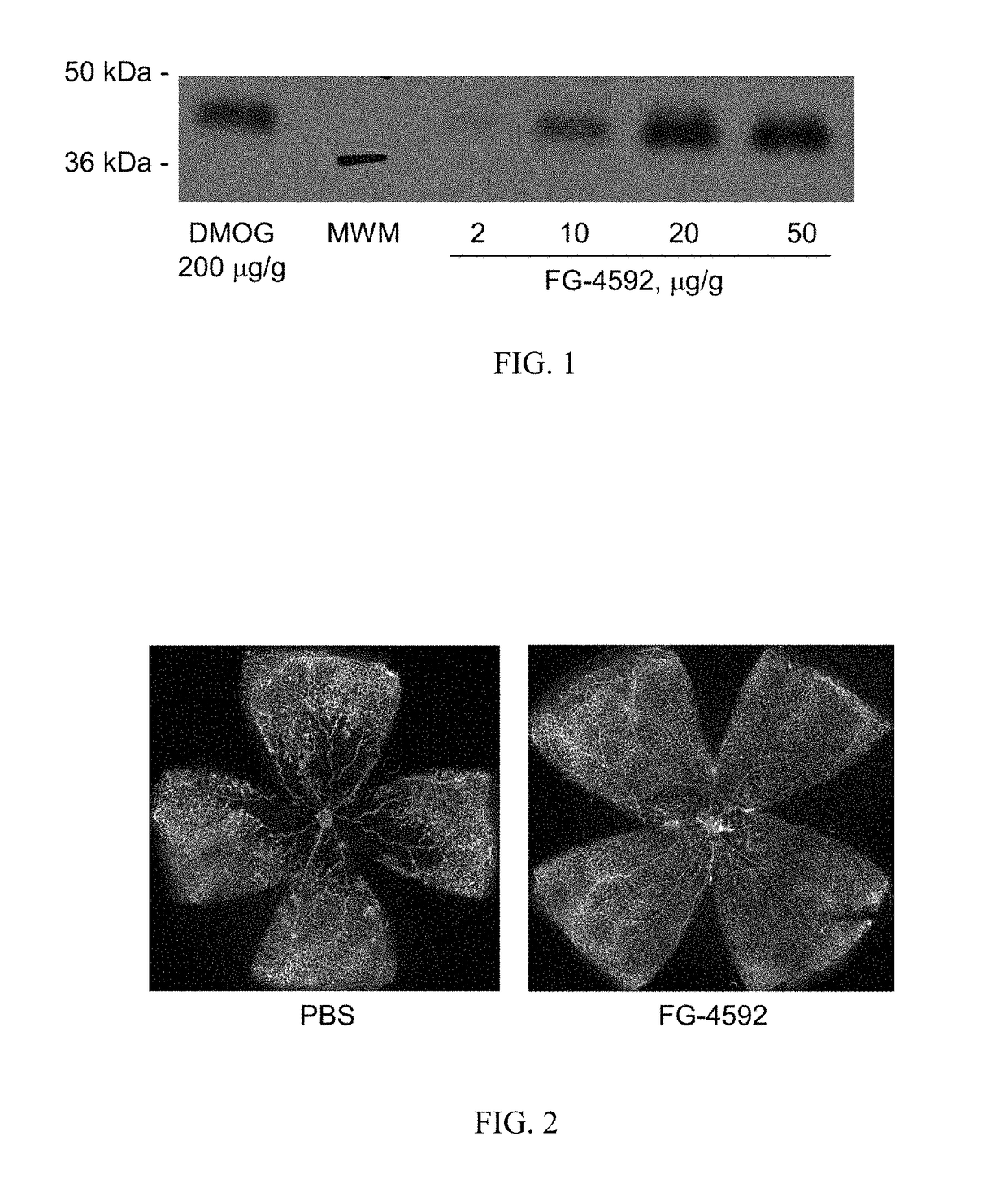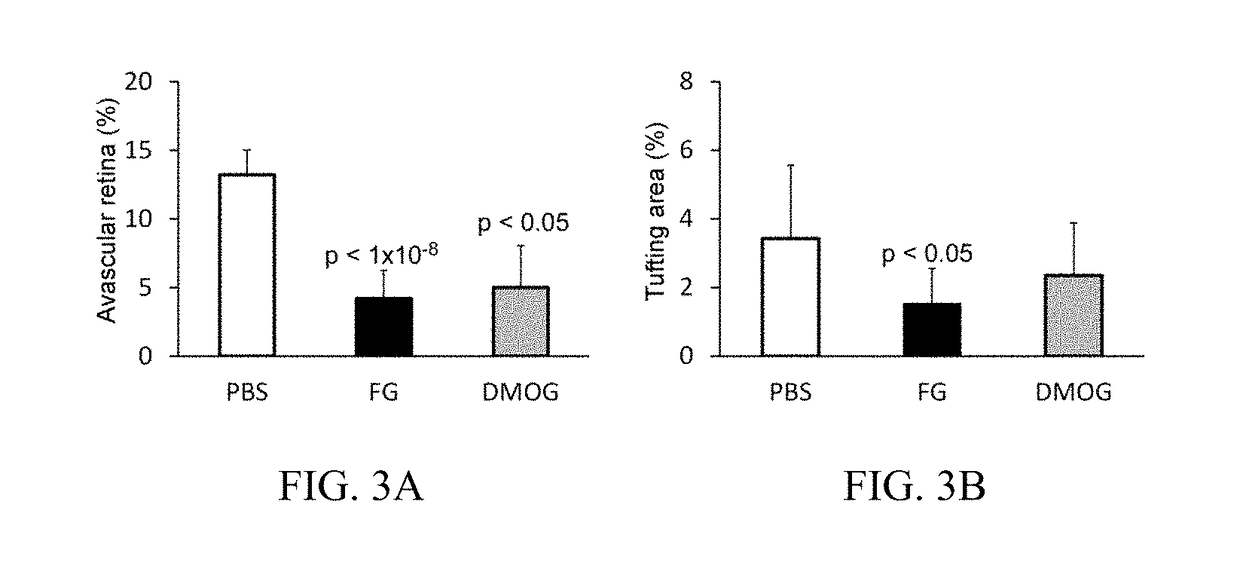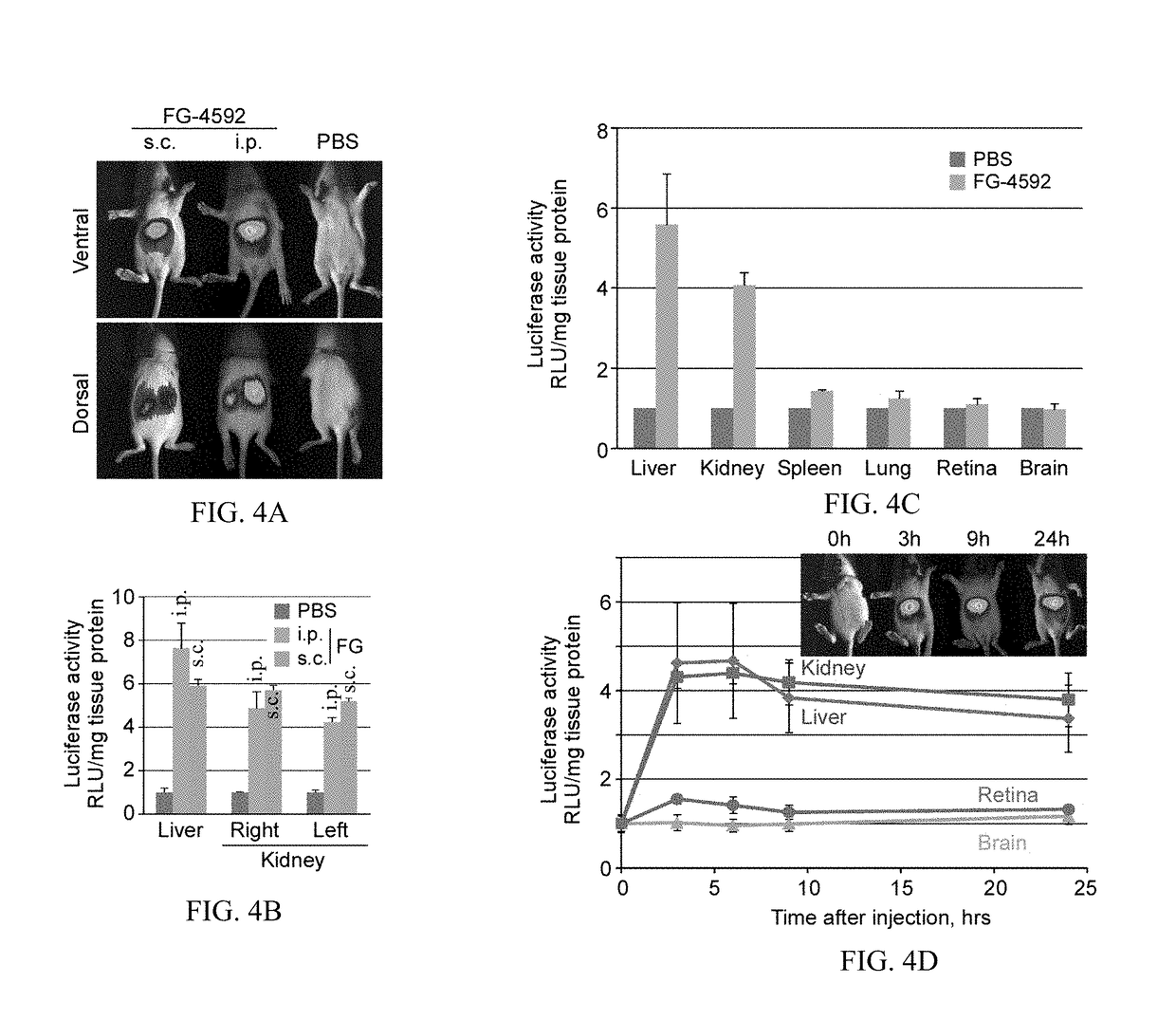Treatment of Retinopathy of Prematurity (ROP)
a retinopathy and prematurity technology, applied in the field of rop treatment, can solve the problems of prematurity child at risk for multiorgan damage, toxic to prematurity developing tissues, prematurity retina, etc., and achieve the effects of rop, oxygen toxicity, and preservation of retinal vessels
- Summary
- Abstract
- Description
- Claims
- Application Information
AI Technical Summary
Benefits of technology
Problems solved by technology
Method used
Image
Examples
first embodiment
[0045]In the compound of Structural Formula I:[0046]R1 is selected from the group consisting of hydrogen, alkyl, alkoxy, amino, substituted amino, aminoacyl, aryl, halo, heteroaryl, heterocyclyl and —XR6;[0047]X is oxygen, —S(O)n— or —NR7—;[0048]n is 0, 1 or 2;[0049]R6 is selected from the group consisting of alkyl, aryl, cycloalkyl, heteroaryl and heterocyclyl; and[0050]R7 is hydrogen, alkyl or aryl; or[0051]R6 and R7, together with the nitrogen atom to which they are commonly bound, form a heterocyclyl;[0052]R2 and R3 are independently selected from the group consisting of hydrogen, alkyl, aryl, heteroaryl, halo, hydroxy, cyano, —S(O)m—NR8—R8, —NR8C(O)NR8R8 and —YR8;[0053]m is 0, 1 or 2;[0054]Y is oxygen, —S(O)m′- or —NR9—;[0055]m′ is 0, 1 or 2;[0056]each R8 is independently selected from the group consisting of hydrogen, alkyl, aryl, cycloalkyl, heteroaryl and heterocyclyl; and[0057]R9 is selected from the group consisting of hydrogen, alkyl and aryl; or[0058]R8 and R9, together ...
second embodiment
[0077]In the compound of Structural Formula I, the compound of Formula I is represented by Structural Formula Ia:
or a pharmaceutically acceptable salt thereof, wherein R1 and R2 are as defined and described in the first embodiment, or any aspect thereof.
third embodiment
[0078]In the compound of Structural Formula I, the compound of Structural Formula I is represented by Structural Formula II:
or a pharmaceutically acceptable salt thereof. The compound of Structural Formula II is also referred to herein as FG-4592.
[0079]“Alkyl,” as used herein, refers to a saturated branched or straight-chained monovalent hydrocarbon group having 1 to 10 carbon atoms, particularly, 1 to 5 carbon atoms and, more particularly, 1 to 3 carbon atoms. Exemplary alkyl groups include methyl, ethyl, n-propyl, iso-propyl, n-butyl, t-butyl, n-pentyl and the like.
[0080]Alkyl can be unsubstituted or substituted with one or more substituents (e.g., 1 to 5 substituents, 1 to 3 substituents) independently selected from the group consisting of alkoxy, acyl, acylamino, acyloxy, amino, substituted amino, aminoacyl, aminocarbonylamino, aminothiocarbonylamino, aminocarbonyloxy, aryl, aryloxy, aryloxyaryl, cyano, halogen, hydroxyl, nitro, oxo, thioxo, carboxyl, carboxyl esters, cycloalkyl...
PUM
 Login to View More
Login to View More Abstract
Description
Claims
Application Information
 Login to View More
Login to View More - R&D
- Intellectual Property
- Life Sciences
- Materials
- Tech Scout
- Unparalleled Data Quality
- Higher Quality Content
- 60% Fewer Hallucinations
Browse by: Latest US Patents, China's latest patents, Technical Efficacy Thesaurus, Application Domain, Technology Topic, Popular Technical Reports.
© 2025 PatSnap. All rights reserved.Legal|Privacy policy|Modern Slavery Act Transparency Statement|Sitemap|About US| Contact US: help@patsnap.com



